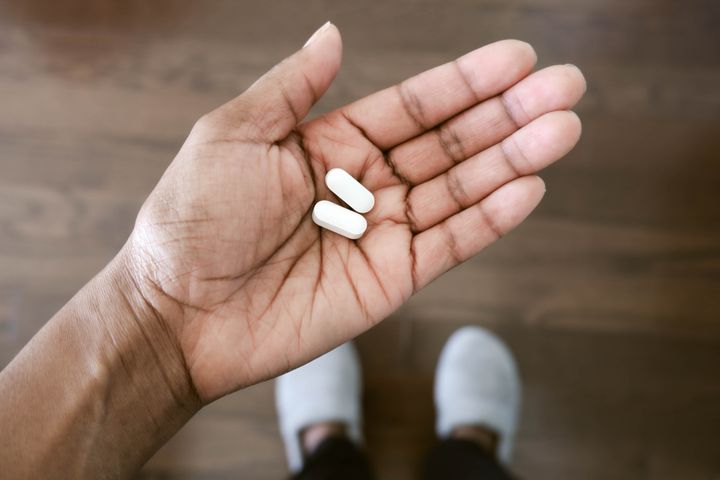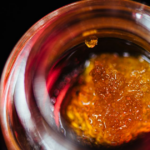Anemia, a common blood disorder, affects more than 3 million people in the United States. The condition can be triggered by a few things, including some underlying health issues, and is more common among women. Anemia might make you crave ice, have cold hands and feet, or feel dizzy when you stand up too quickly.
But there’s another, lesser-known complication that’s gained some attention recently. In a viral TikTok with 1.6 million views, makeup artist Lexi Michaela posted a tutorial on how she covers her “anemia lips” with a lip stain. Users flocked to the comments sharing that they didn’t know anemia could strip natural pigment from your skin and cause pale lips.
“Is that why my lips have no color to them?!” one user wrote.
“Oh my gosh!!! I didn’t know that’s why my lips are so pale!!!” another commented.
“My lips are literally grey when I have nothing on them, it’s so weird,” one user commented on the video. “It’s like I always have concealer lips.”
“Anemia lips” is not a medical term. But Dr. Andrea R. Dean, a hematologist and oncologist based in Lombard, Illinois, told HuffPost that paleness in the lips, skin, inner eyelids and nail beds is a telltale sign of the blood condition.
“The change in color is due to shunting of blood away from less vital organs, such as the skin, to more vital organs, such as the brain, when the hemoglobin is low,” Dean said.
Hemoglobin is a protein containing iron and is found in our red blood cells, which carry oxygen throughout the body. If these levels are low, you might experience anemia. This usually comes with symptoms like dizziness, weakness, fast or irregular heartbeat, chest pain, headaches and, in this case, skin discoloration.
However, learning and addressing the cause of anemia can help to regain the natural pigment not only to your lips, but to your hands, feet and other skin as well.
What Causes Anemia?
There are three major causes of anemia: blood loss, the destruction of red blood cells, and a decreased production of red blood cells, Dean said. Here are some of the most common reasons why one of these issues may occur:
Iron Deficiency
The most common of the blood disorders is iron deficiency, which is often found in women who have menstrual blood loss, said Dr. Margaret V. Ragni, a professor and director of the Hemophilia Center of Western Pennsylvania.
Additionally, people who have low iron intake ― including vegetarians and vegans, children who drink more than 16 ounces of cow’s milk, and individuals with gastrointestinal diseases, including celiac disease ― are at high risk for anemia. Other common risk factors are pregnancy, breastfeeding, major surgery or physical trauma.
Iron is necessary to maintain body functions and healthy cells, skin, nails and hair, allowing the body to regenerate red blood cells in the bone marrow. As a result of decreased oxygen levels in the blood caused by low iron, you might see changes in the natural pigment of your skin.
Vitamin Deficiency
A lack of vitamin B12 can cause a lack of red blood cells, white blood cells and platelet production, which can lead to anemia. Unlike other forms of deficiencies, vitamin B12-deficiency anemia is typically due to risk factors that aren’t associated with not getting enough vitamins in your food.
Without a protein made in the stomach that helps absorb vitamin B12, you might not be able to absorb vitamins that come from your food. Additionally, lifestyle habits ― including drinking alcohol, taking certain medications and having certain medical conditions ― might make it difficult for your body to absorb vitamins. A low amount of red blood cells in the body can cause pale skin.
Aplastic Anemia
This rare bone marrow failure disorder causes bone marrow to stop making enough red blood cells, white blood cells and platelets.
For those with aplastic anemia, the body’s immune system attacks stem cells, which can cause fatigue, infections, frequent nosebleeds, bleeding gums, pale skin, or red or purple spots under the skin. With fewer stem cells, the blood marrow cannot produce enough blood cells, which can cause severe anemia.
Hemolytic Anemia
Unlike other forms of anemia, hemolytic anemia causes the body to destroy red blood cells faster than they are made. Destruction may be caused by infections, autoimmune disorders, or abnormalities in red blood cells. The condition can be inherited from parents or acquired by infections, medicines, blood cancers, autoimmune disorders, tumors, mechanical heart valves or a severe reaction to a blood transfusion.
As a result, people with hemolytic anemia may have symptoms including pale or yellow skin, eyes and mouth.
Sickle Cell Anemia
Sickle cells cause red blood cells to become hard and form a C-shape, getting stuck in small blood vessels and clogging the blood flow. Since sickle cells die early, this causes a low level of red blood cells because these cells cannot deliver oxygen in the body.
The inherited blood disorder can cause early symptoms of yellow skin, or jaundice, which occurs when too many red blood cells are dying or breaking down, affecting the liver.
Grace Cary via Getty Images
How To Treat Anemia And Regain Your Lips’ Natural Pigment
Finding the underlying cause of your anemia is important for relieving symptoms, including any discoloration.
“Anemia should be evaluated medically by checking hemoglobin, hematocrit, iron, and ferritin, all commonly performed blood tests,” Ragni said. “A blood smear should be performed to assess the size and shape of the red cells. Once the type of anemia is determined, treatment can be given.”
Treatment options can include:
Procedures
Blood transfusions are a safe and common medical procedure to restore the hemoglobin back to its normal range, Dean said. This includes putting healthy donated blood into the body.
The procedure can increase the number of red cells for those with serious forms of anemia with complications. By doing so, the natural pigment in skin should return as a result of increasing oxygen levels.
Supplements And Adjusting Lifestyle Habits
“You can consume your daily requirement of B12, folate and iron by having a well-balanced diet containing fruits, green leafy vegetables and white/red meats,” Dean said.
This can include spinach, beef, tofu, beans, dates and other foods that contain high levels of iron, or options like salmon, beef liver, eggs and cheese to increase vitamin B12 levels.
Supplements can also help to treat iron and vitamin deficiency anemia. However, it’s important to talk to your doctor before taking any supplement, since anemia can be diagnosed with normal levels of iron and vitamins.
“Medical providers educating the public on signs of B12 deficiency, iron deficiency, heavy menstrual cycles and gastrointestinal bleeding can also help to prevent anemia,” Dean said. “Knowing what signs to look out for will allow people to seek medical attention earlier and hopefully before anemia develops.”


